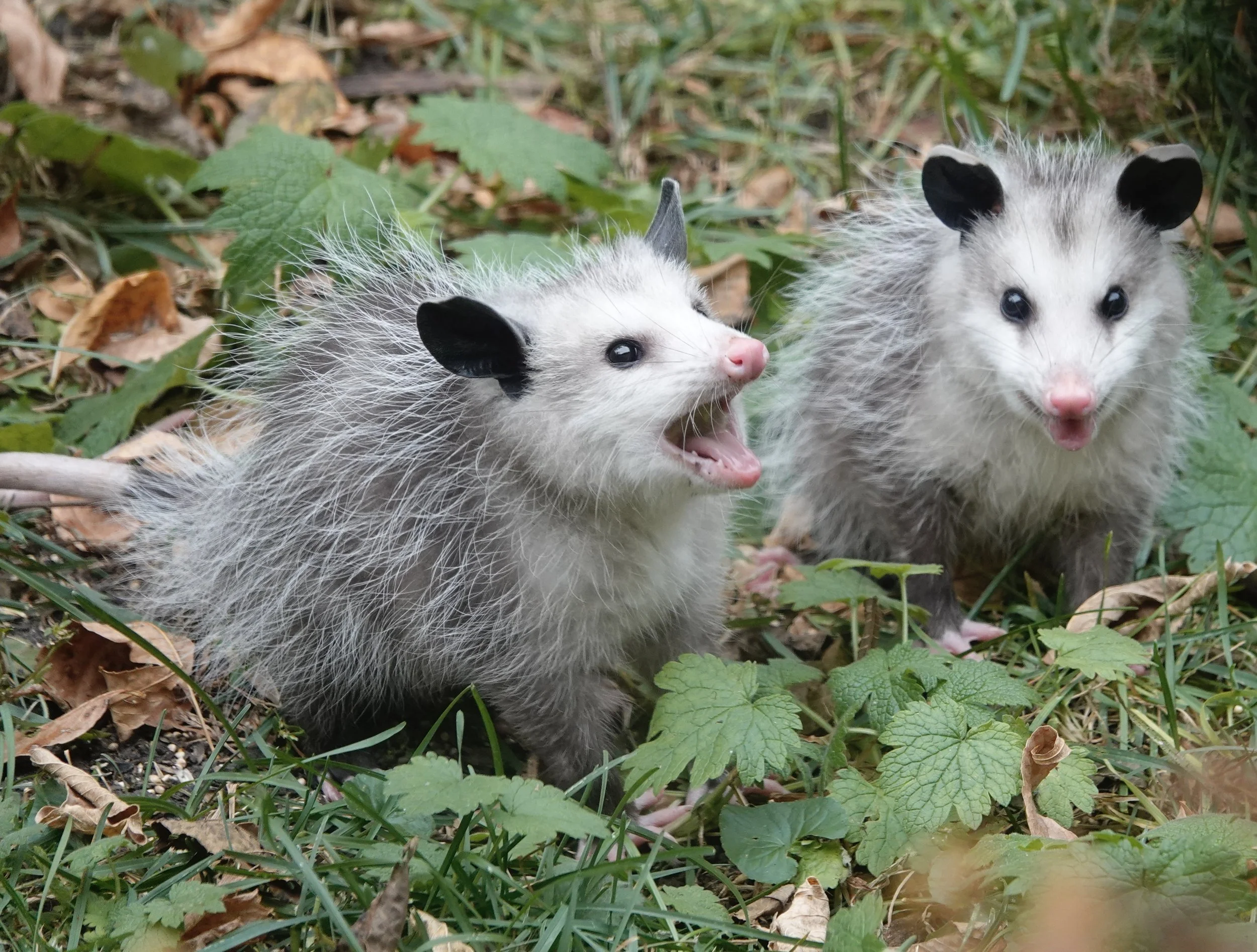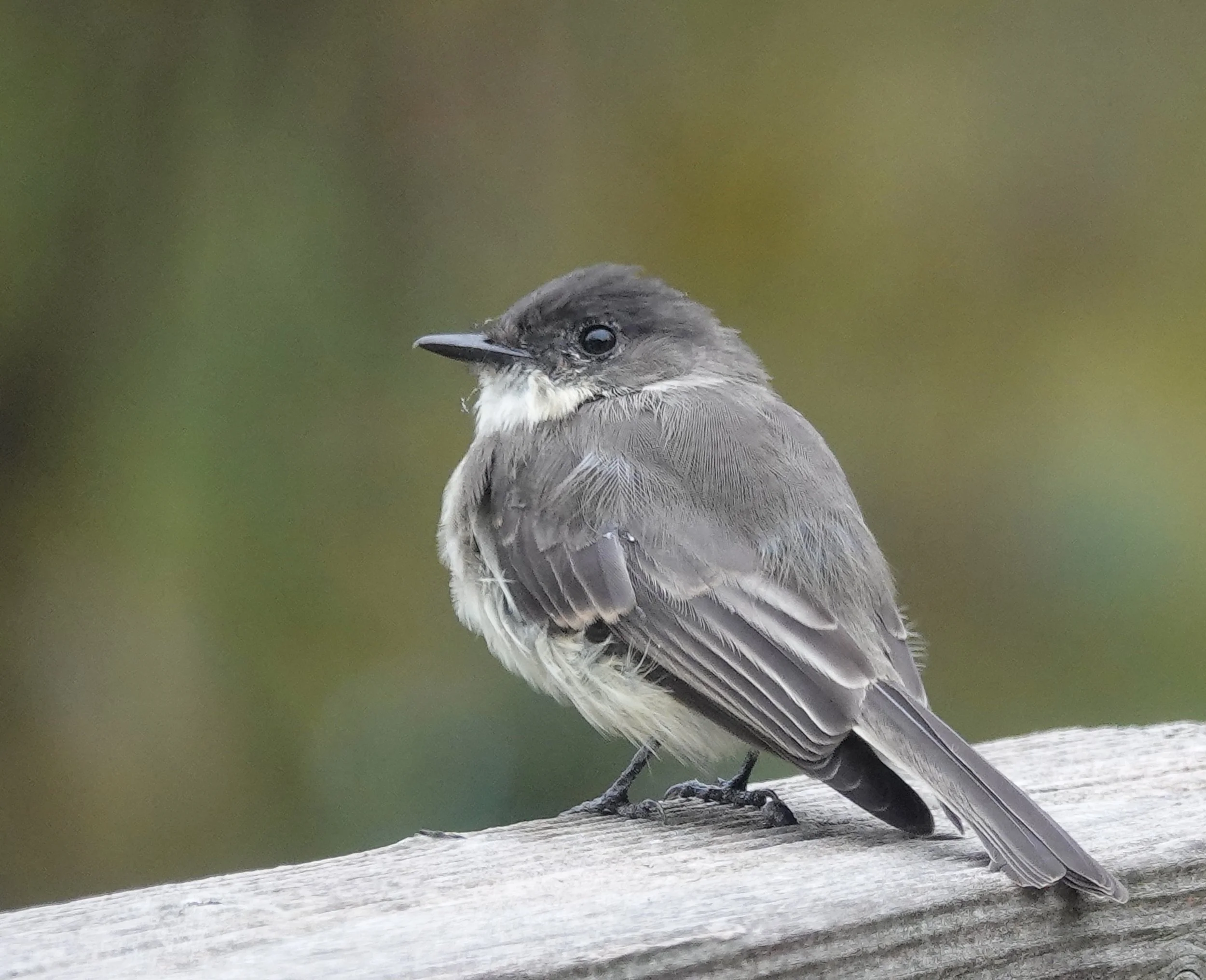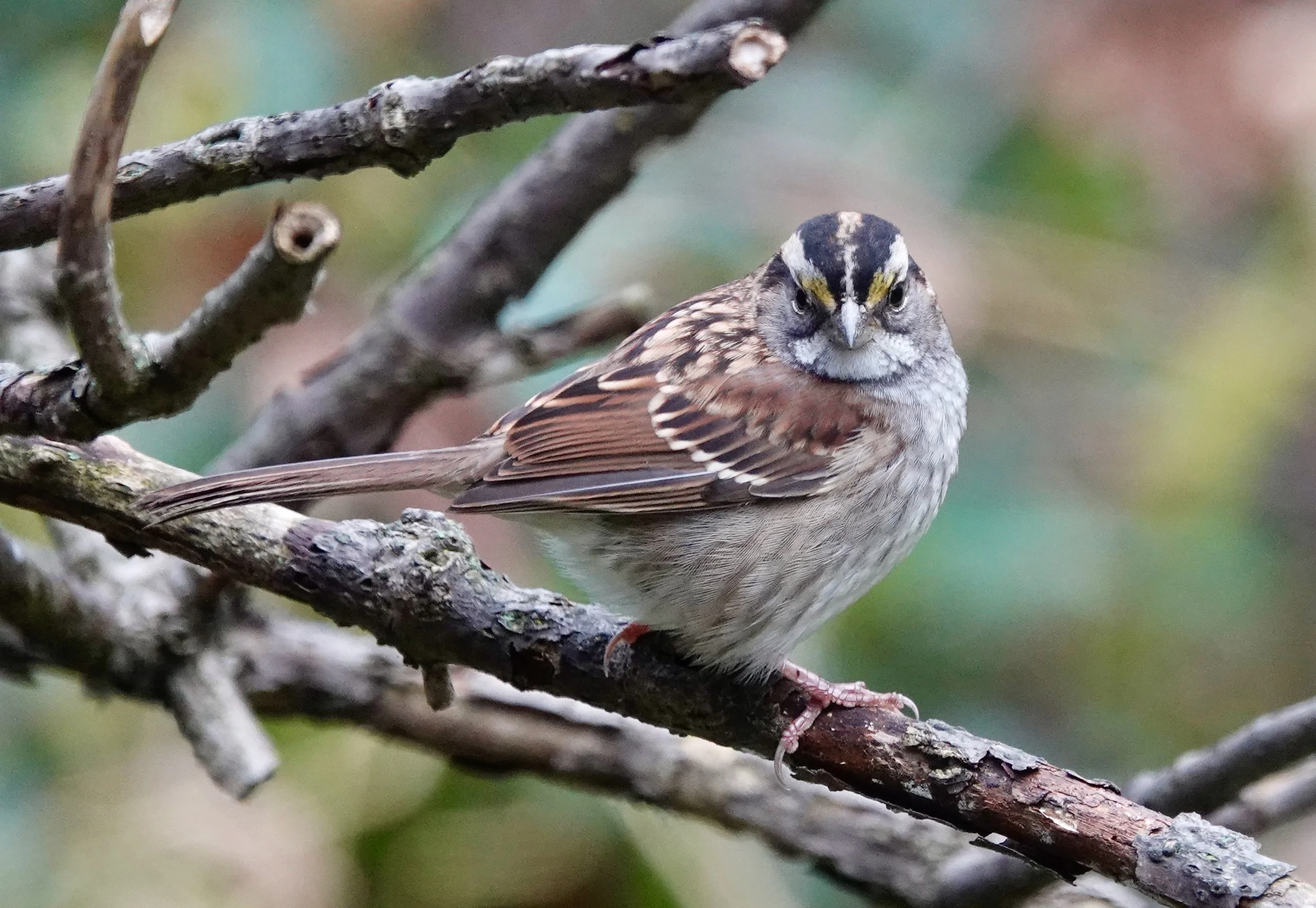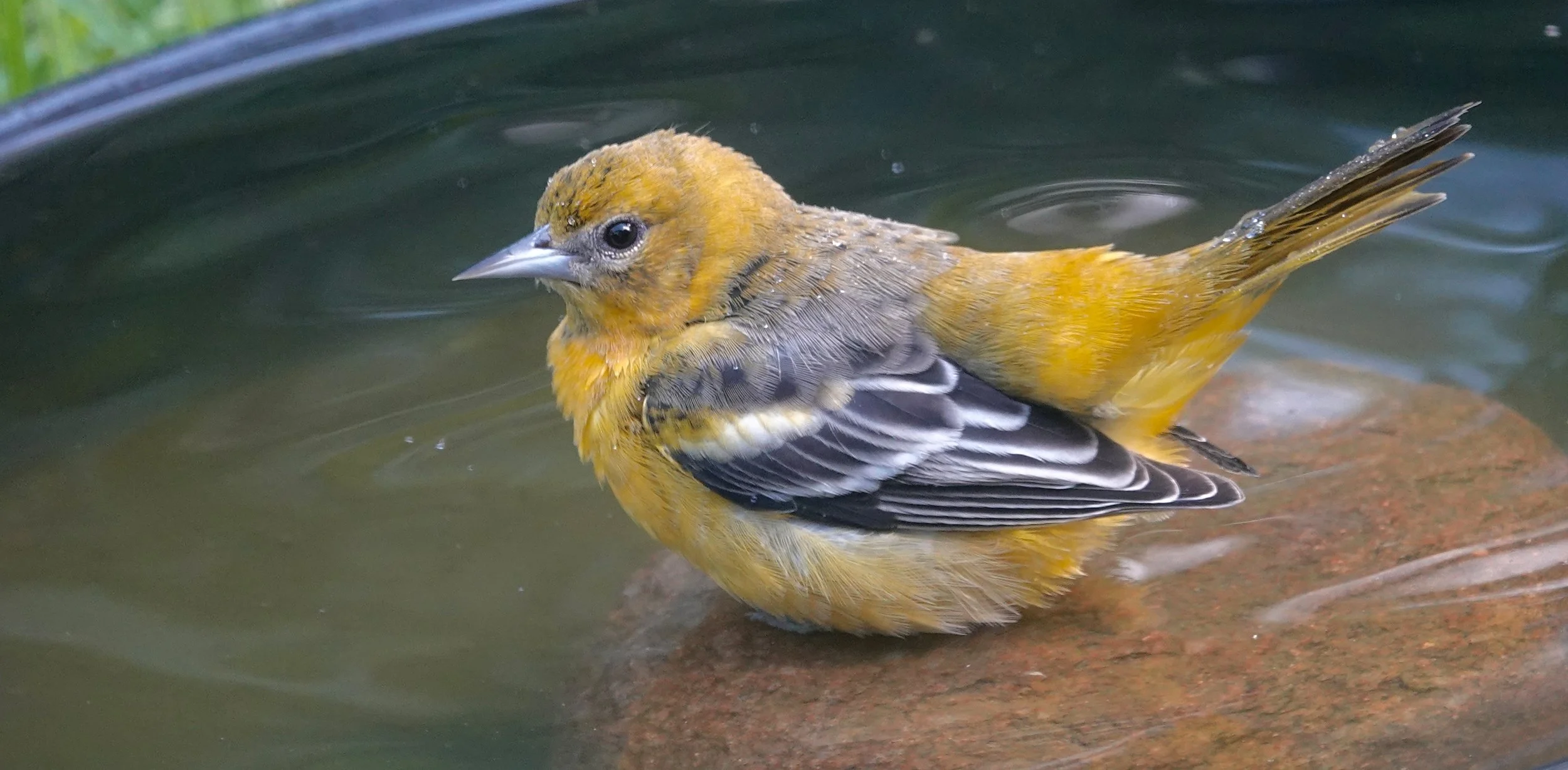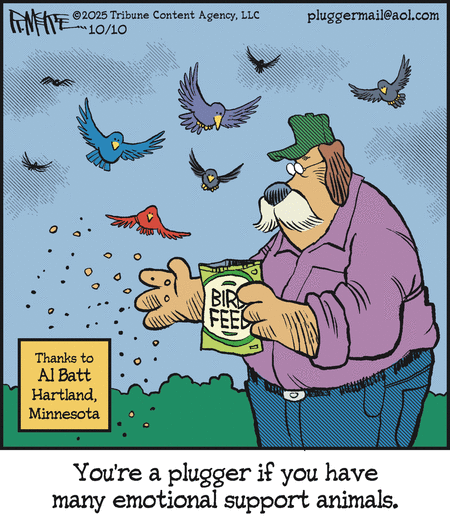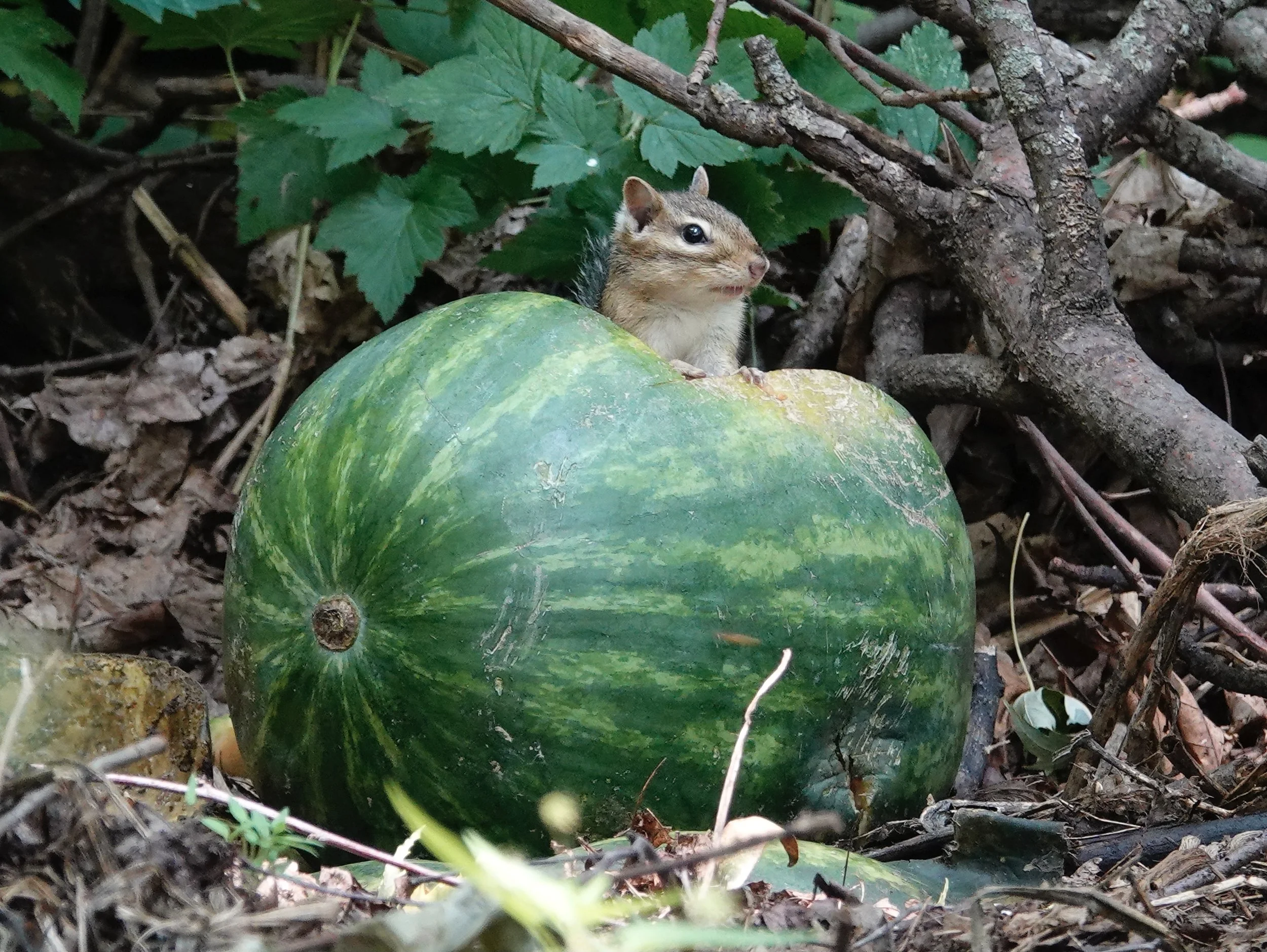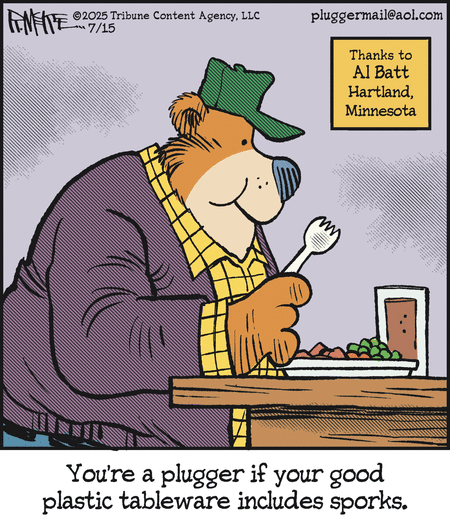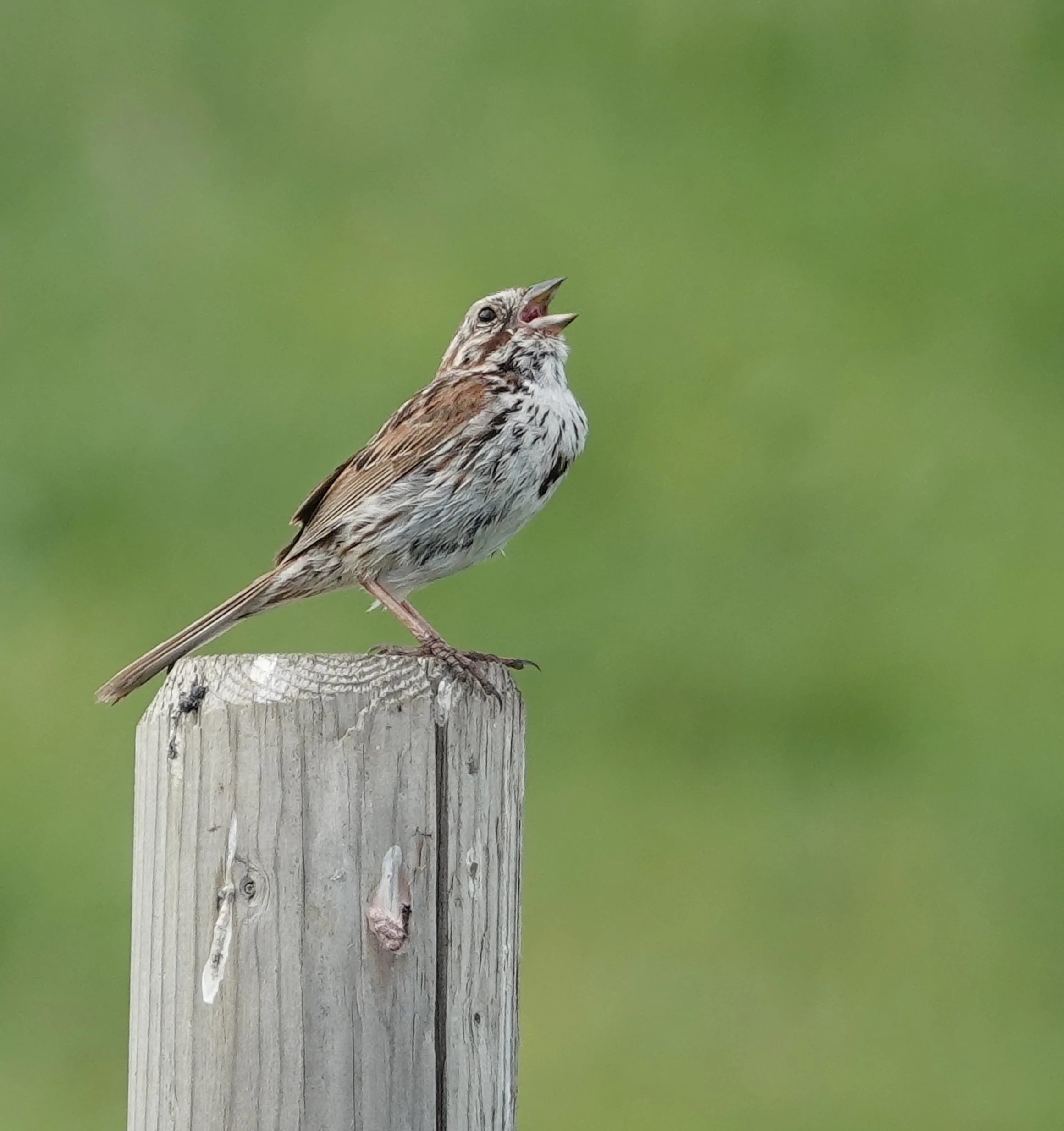Naturally
The weather is good at what it does.
The leafy nests of squirrels had become readily observable. I had a noise complaint. Birds were too quiet. Snow fell. No surprise, it’s November. Thomas Hood wrote, “No sun—no moon! No morn—no noon—No dawn—no dusk—no proper time of day. No warmth, no cheerfulness, no healthful ease, No comfortable feel in any member—No shade, no shine, no butterflies, no bees, No fruits, no flowers, no leaves, no birds?—November!”
I remember being a whippersnapper and getting to see a Minnesota rock band called The Trashmen perform their big hit “Surfin’ Bird” to an appreciative audience of adolescents who hadn’t a clue about surfing. The Trashmen were America’s greatest landlocked surf band. “The bird is the word” was a significant part of that song. “A-well-a everybody's heard about the bird. B-b-b-bird, bird, bird, b-bird's the word. A-well-a bird, bird, bird, the bird is the word. Papa-ooma-mow-mow, papa-ooma-mow-mow.” I’ll bet The Trashmen didn’t know they were singing to both birders and prospective surfers. Alas, cornfields made for crummy surfing, unless you were a hunting marsh hawk able to surf grasslands, fields and marshes with the best of them.
Finch forecast
Tyler Hoar’s winter finch forecast, which predicts what winter finches and other passerines will cross the border based on food supplies in Canada, indicates it’ll be a good year for purple finches, pine siskins and red-breasted nuthatches. Redpolls will visit after snow covers weedy fields in the north.
State birds
The common loon is Minnesota’s state bird. That qualifies residents to be loonatics. I spoke at an event in North Carolina, where a resident of that state and one from Kansas both told me I was fortunate to live in a state with a unique bird as its state bird. The northern cardinal is the state bird of Illinois, Indiana, Kentucky, North Carolina, Ohio, Virginia and West Virginia. The western meadowlark is the state bird of Kansas, Montana, Nebraska, North Dakota, Oregon and Wyoming. The northern mockingbird is the state bird of Arkansas, Florida, Mississippi, Texas and Tennessee. The American robin is the state bird of Connecticut, Michigan and Wisconsin. The American goldfinch is the state bird of Iowa, New Jersey and Washington. The Eastern bluebird is the state bird of Missouri and New York. The black-capped chickadee is the state bird of Massachusetts, while Maine’s state bird is the chickadee, with no specific species designated. The Rhode Island Red is a chicken and the state bird of Rhode Island. South Dakota has the ring-necked pheasant as its state bird.
Prometheus
In ancient Greek mythology, Prometheus observed the plight of humans and felt compassion for those pitiful creatures who lived in darkness and despair. That titan defied the orders of the gods on Mount Olympus, stole fire and presented it to the people living in a cruel world. Legends say Prometheus also created humans and introduced science and mathematics to the world. For these transgressions, Prometheus was doomed to have his liver eaten by an eagle. Each day, his liver would regrow, and the raptor returned to feast again.
Q&A
“Do the provinces of Canada have official birds?” The provincial bird of Alberta is the great horned owl, British Columbia’s is the Steller’s Jay, Manitoba—great gray owl, New Brunswick—black-capped chickadee, Newfoundland and Labrador—Atlantic puffin, Nova Scotia—osprey, Northwest Territories—gyrfalcon, Nunavut—rock ptarmigan, Ontario—common loon, Prince Edward Island—blue jay, Quebec—snowy owl, Saskatchewan—sharp-tailed grouse, and Yukon’s provincial bird is the common raven. The Royal Canadian Geographical Society chose the Canada jay as the national bird of Canada, but the Canadian government has yet to do so officially. That jay’s nicknames include gray jay, camp robber, whiskyjack and gorby. “Gorby” doesn’t refer to a resemblance to the late Mikhail Gorbachev, but derives from the Scots word gorb, meaning “glutton.”
“What do the almanacs predict for this winter?” The Farmers’ Almanac, published in Maine since 1818, says it will be very cold and snowy. That periodical is ceasing publication after the 2026 issue. The Old Farmer’s Almanac, published since 1792, currently in New Hampshire, forecasts a mild, dry winter.
“When is the average date of the first measurable snowfall in Minnesota?” Approximate dates for these cities: International Falls is Oct. 20, Duluth Oct. 24, St. Cloud Nov. 2, Twin Cities Nov. 4, Rochester Nov. 5 and Marshall is Nov. 12.
Thanks for stopping by
“There is always more goodness in the world than there appears to be, because goodness is of its very nature modest and retiring.”—Evelyn Beatrice Hall.
A “Frank & Ernest” comic strip by Bob Thaves in 1982 showed a sandwich board announcing a “Fred Astaire Festival.” A woman said, “Sure, he was great, but don’t forget Ginger Rogers did everything he did backwards and in high heels!”
Do good.
©️Al Batt 2025
The word “opossum” derives from a Powhatan word meaning “white dog” or “white animal.” I write “opossum,” unless writing "playing possum,” and I say “possum.” Opossums live in the Americas, while possums (a different animal) live in Australia, New Guinea and Sulawesi. Merriam-Webster notes the word is pronounced uh-possum, but it’s OK to omit the o sound. The Virginia opossum is the only marsupial found in the U.S. Young opossums photo by Al Batt.

